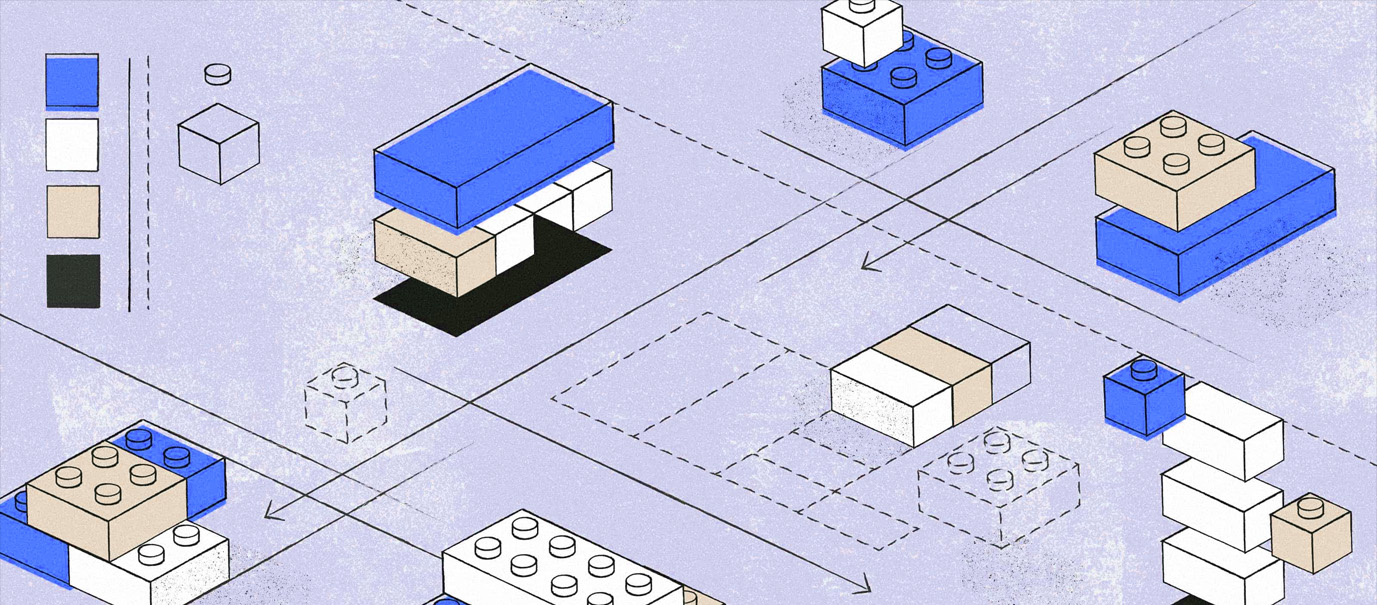
A design system is a complete set of standards intended to manage design at scale using reusable components and patterns. In simple words, it is a repository of repeatable components and standards for how to use those components to design and develop products at in less time.
Why Use a Design System?
Great design isn’t just pleasant on the eyes, it’s good for business. According to Kinesis Inc., 94 percent of a user’s first impressions of a company are design-related and 75 percent of those same users admit to making judgments about a company’s credibility based on website design. Meaning, good design is a key differentiator and competitive advantage for companies that can master it. And, if consistency is credibility, then one key to success is ensuring your company has a foundation in place that can support and scale consistent design guidelines and processes across your organization to improve UX and deepen consumer trust.
Consistency: A consistent approach not only makes work easier for your team, but it also helps build brand recognition and creates a better experience for your customers. 24.5% of respondents in a 2019 Lucidpress survey reported that “inconsistent branding creates confusion in the market,” and 18.6% said that inconsistency could be detrimental to a brand’s reputation. Reduce confusion and boost your brand’s reputation with a consistent design.
Cross-functional collaboration: For the team involved in product development, It helps the team to plan, develop and maintain product quality. It also helps team in understanding naming conventions as it includes the same vocabulary across different projects. Gone are the days when a developer referred to a button as the red colored one. This leads to better discussions between the developers and designers and allows them to talk in the same naming convention.
Speed and scalability: A good design system has the ability to replicate designs quickly by utilizing premade UI components and elements. Teams can continue to use the same elements over and over, reducing the need to reinvent the wheel and thus risking unintended inconsistency.
Reduce Cost and Errors: Using a design system can also help to reduce development and maintenance costs, as it eliminates the need to recreate design elements and components for each new project or product.
Educational tool and reference for new joiners: Explicitly written usage guidelines and style guides help onboard individual contributors who are new to UI design or content creation.
Structure of a Design System:
The structure of a design system can vary depending on the specific needs of the company and the products and services it offers, but typically it includes the following components:
Design Principles: These are the core values and guidelines that shape the overall design of the company’s products and services. They provide a foundation for the design system and help to ensure consistency and cohesiveness in the visual appearance and user experience of the products and services.
Branding Guidelines: These guidelines provide information on how to use the company’s brand elements, such as colors, typography, and imagery, in a consistent and effective way.
UI Components: These are reusable UI elements, such as buttons, forms, and navigation, that can be used to create new products and services. They provide a consistent look and feel and help to ensure that the products and services align with the company’s design principles.
Design Patterns: These are common design solutions that can be used to solve specific design problems. They provide a starting point for designers and developers and help to ensure that the products and services are user-friendly and easy to use.
Accessibility Guidelines: This provide guidance on how to create products and services that are accessible to users with disabilities.
Content Guidelines: This provide guidance on how to create clear, consistent and effective content across all products and services.
Code library: This is a collection of code snippets or libraries that can be used to implement the design system in different platforms like web or mobile.
Documentation: The design system should have clear documentation with examples and use cases, that helps designers and developers understand the design system and how to use it correctly.
Governance and Maintenance: This includes the processes, roles and responsibilities for maintaining and updating the design system over time.
All these components work together to provide a cohesive and consistent visual appearance and user experience across all products and services, while allowing for flexibility and scalability as the company grows and evolves.

Design System Structure as per University of Arts, London


